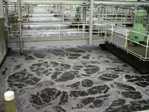
Case Study: Curren Hits the Bull's Eye Using Online Process Analyzers
- By Dave Marsh
- Aug 11, 2010
The Howard F. Curren Advanced Wastewater Treatment Plant is one of the largest nitrification/denitrification filter plants in the world with a design capacity of 96 million gallons per day average daily flow. It serves about 110,000 accounts in the City of Tampa and portions of Hillsborough County, Fla. Over the years, the quality of its treated effluent has been frequently cited as the primary factor behind the dramatic improvements in Tampa Bay's water quality and the return of its sea grasses, turtle grasses and game fish.
The facility is Tampa's only wastewater treatment plant so the volume and characteristics of the influent flowing into the plant vary constantly, making access to reliable real-time information critical for optimal process control. Years ago, plant managers recognized that attempting to operate the plant without timely information was akin to trying to hit a target's bull's eye while blindfolded.
To better inform its operators about the nitrification and denitrification processes, plant management invested in three ChemScan online process analyzers manufactured by ASA Analytics. For 15 years the ChemScan Analyzers have provided operators with automated sampling and online, real-time results. At two points on the six stages in the plant's nitrification reactors, they automatically draw samples and then analyze them for nitrate and ammonia.
“Online monitoring has removed the guesswork from optimizing our nitrification and denitrification processes," said Robert Decker, operations specialist. “We've used ChemScan as a tool to inform our operators when it’s appropriate to start and stop blowers in our nitrification reactors. If the ammonia is creeping up in Zone 6, it means we're not converting everything, so we need to start a blower. At one time, operators relied on their experience to adjust the process because they didn’t have access to timely information. Now online real-time data enables them to adjust the process much more efficiently. We're soon going to connect our analyzers to a PLC via the SCADA, which will enable the PLC to automatically adjust the blowers and provide more precise control."
Decker said by using the diffused aerators more efficiently they’ve saved energy and reduced operating costs. “We found that sometimes we didn't need that extra blower. In fact, sometimes we could get the job done by turning them down and saving power."
The ChemScan Online Analyzers use fully automated ultraviolet-visible spectrometry to measure absorbance levels across 256 wavelengths of light. A single process analyzer can monitor up to eight sample points, separately detecting ammonia, nitrite and nitrate from multiple process sample points or basins.
The plant's analyzers also are instrumental in controlling the denitrification process. Samples of the flow exiting the nitrification final tanks are taken and analyzed automatically for nitrates. The resulting value is used in a calculation sent through a PLC via the SCADA system to pace the methanol that feeds denitrification.
"We've saved on methanol costs," said Decker. "Before we had online monitoring, our operators had to run tests every hour and then make their adjustments. There are many variables that determine how much methanol you use ─ loadings, flows, even the time of year. All operators do things a little differently. One operator might adjust the nitrate value upward 5 points while the next guy might feel that is too much. However, it could be an hour before a scheduled test would detect it, so for that entire time, he would overshoot it. More consistent methanol pacing has resulted in more efficient use of methanol, which reduces our costs.”
The plant has also saved on chemical costs and labor. Decker explained that reagents are mixed onsite from common chemicals, which costs less than purchasing reagents from distributors. “The time savings was significant. Before the ChemScans, every hour, operators did their tests for ammonia, nitrate, nitrite and chlorine residual. And then they had to manually adjust it with the controller. Every hour we would test and, over time, that adds up to a lot of labor," he added.
The analyzers can monitor for phosphorus but the Curren plant's permit has a variance on that nutrient. Tampa Bay is the largest U.S. depository of "bone rock," which is the primary cause of background total phosphorus in the bay.
“Adding the ChemScan Online Analyzers was a game changer for us,” said Decker. “Having access to accurate and timely information enabled us to improve our operations while reducing costs at the same time.”
For additional information about the H.F. Curren plant, visit www.greeley-hansen.com/project1.htm and ftp://ftp.dep.state.fl.us/pub/labs/lds/reports/9689.pdf.
About the Author
Dave Marsh is the founder of Water Works Marketing Services and specializes in writing for the water and wastewater treatment industries. He is the former director of Marketing for Culligan and US Filter Corporation. Dave teaches marketing courses at Marquette University.